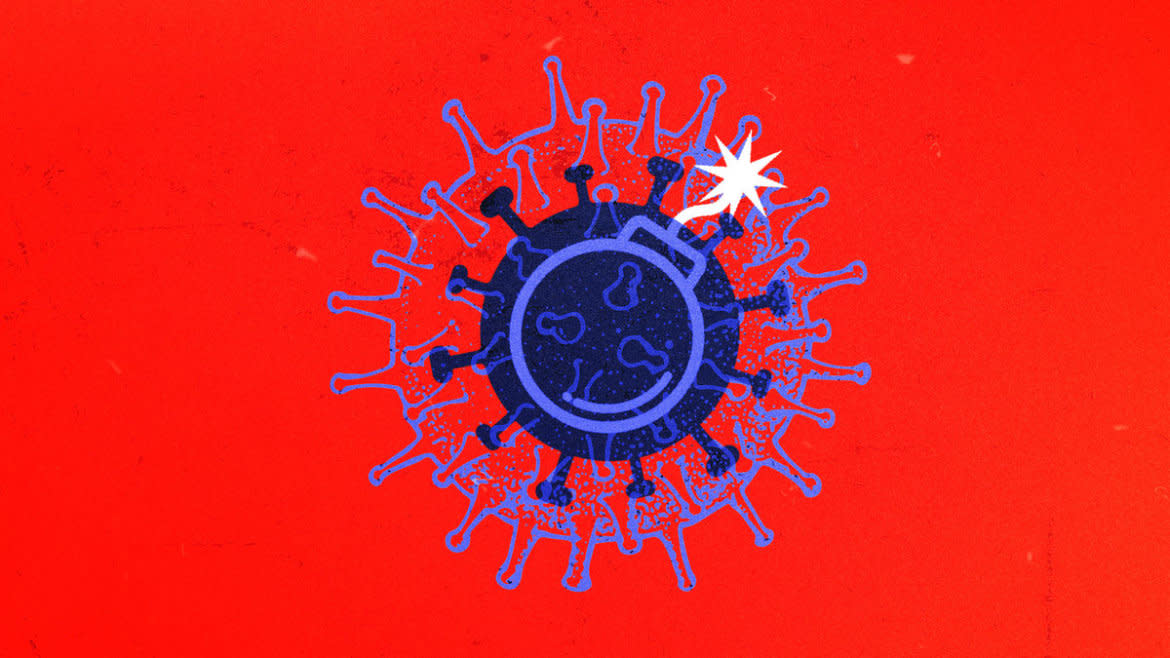Scientists Fear New COVID Strains Are Deadly—Just Like 2020 Wave

The new COVID-19 subvariants that are becoming dominant all over the world aren’t just more contagious than previous variants and subvariants—they might cause more severe disease, too.
That’s an ominous sign if, as experts predict, there’s a new global wave of COVID in the coming months. It’s one thing to weather a surge in infections that mostly results in mild disease. Cases go up but hospitalizations and deaths don’t. But a surge in serious disease could lead to a surge in hospitalizations and deaths, too.
It could be like 2020 or 2021, all over again. The big difference is that we now have easy access to safe and effective vaccines. And the vaccines still work, even against the new subvariants.
A new study from The Ohio State University is the first red flag. A team led by Shan-Lu Liu, co-director of HSU’s Viruses and Emerging Pathogens Program, modeled new SARS-CoV-2 subvariants including BQ.1 and its close cousin, BQ.1.1.
The team confirmed what we already knew: BQ.1 and other new subvariants, most of them the offspring of the BA.4 and BA.5 forms of the Omicron variant, are highly contagious. And the same mutations that make them so transmissible also make them unrecognizable to the antibodies produced by monoclonal therapies, rendering those therapies useless.
That should be reason enough to pay close attention as BQ.1 and its cousins outcompete BA.4 and BA.5 and become dominant in more countries and states. But then Liu and his teammates also checked the subvariants’ “fusogenicity.” That is, how well they fuse to our own cells. “Fusion between viral and cellular membrane is an important step of viral entry,” Liu told The Daily Beast.
In general, the greater the fusogenicity, the more severe the disease. Liu and his colleagues “observed increased cell-cell fusion in several new Omicron subvariants compared to their respective parental subvariants,” they wrote in their study, which appeared online on Oct. 20 and is still under peer review at New England Journal of Medicine.
This Could Be the Only Way to Beat COVID for Good
If these new subvariants are indeed more transmissible and more severe, they could reverse an important trend as the COVID pandemic grinds toward its fourth year. The trend, so far, has for each successive major variant or subvariant to be more contagious but cause less severe disease.
That trend, combined with widespread vaccination and new therapies, led to what scientists call a “decoupling” of infections and deaths. COVID cases occasionally spike as some new, highly-contagious new variant or subvariant becomes dominant. But because these new forms of SARS-CoV-2 cause less severe disease, deaths don’t increase nearly as much.
That decoupling, along with the availability of vaccines and therapies, has allowed most people all over the world to get back to some kind of normal in the past year or so. If BQ.1 or another highly fusogenic subvariant re-couples infections and deaths, that new normal could become a new nightmare. “More hospitalizations and deaths,” is how Ali Mokdad, a professor of health metrics sciences at the University of Washington Institute for Health who was not involved in the OSU study, summed it up.
It’s possible we’ve already seen the first recoupling. Since the new subvariants began seriously competing for dominance in recent months, epidemiologists watched COVID statistics carefully in order to spot any real-world impacts.
Singapore was a false flag. The tiny Asian city-state had a quick, up-and-down surge in cases this month that some experts initially worried might involve a dangerous new subvariant. But the country’s health ministry sequenced a lot of viral samples, fast, and determined that BA.5 was the culprit. Singapore’s high rate of vaccination and boosting—92 percent of residents have their prime jabs and 80 percent are boosted—tamped down the BA.5 surge without a major spike in deaths.
But then there’s Germany, where cases also surged this month. German authorities haven’t yet determined which variant or subvariant is to blame, but it’s worth noting that BQ.1 is spreading fast all over Europe.
And there are signs of recoupling in Germany. In October, the country registered as many as 175,000 new cases a day—matching the peak of the previous wave back in July. But 160 Germans died every day on average in the worst week of the current surge, whereas just 125 died per day in the worst week of the summer surge. “We could see the same patterns in other European countries… and in the U.S.,” Mokdad said.
There’s still a lot we don’t know about the latest COVID subvariants. And their real-world impact won’t come into focus until we get good data out of Germany. “Close monitoring of new variants and studying their properties are critical,” Liu said.
But one thing is clear. For all their transmissibility and fusogenicity, the new subvariants haven’t significantly escaped the immune effects of the leading vaccines. And the latest “bivalent” boosters, formulated specifically for BA.4 and BA.5, should maintain the vaccines’ effectiveness as long as the dominant subvariants are closely related to Omicron.
Get vaccinated and stay current on your boosters. It’s impossible to stress this too much. Yes, BQ.1 and its cousins exhibit some alarming qualities that could bend the arc of the pandemic back toward widespread death and disruption.
But only if you’re unvaccinated or way behind on your boosters.
Get the Daily Beast's biggest scoops and scandals delivered right to your inbox. Sign up now.
Stay informed and gain unlimited access to the Daily Beast's unmatched reporting. Subscribe now.


